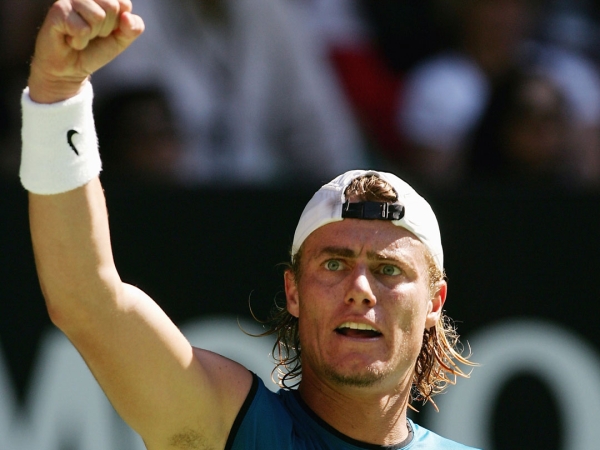Lleyton Hewitt always had a hunch the unflinching Spanish teenager he was about to face for a second time at Melbourne Park was destined to join him as a major champion.
Never could he have imagined just how prolific a Grand Slam winner the young pretender, Rafael Nadal, was to become or just how soon his words were about to ring true.
World No.3 Hewitt had arrived at the Australian Open in 2005 with the hopes of a nation resting squarely on his shoulders.
He had played his way into form having successfully defended his Sydney title and cleared tricky early hurdles against Arnaud Clement and James Blake before a spicy encounter against 25th seed Juan Ignacio Chela set the heavily hyped fourth-round showdown.
“He's a lot better player than whatever his ranking is, to not be seeded,” Hewitt said on the eve of his third tussle with the 18-year-old. “He's good on all surfaces. He's hungry, he's intense, he's competitive, he's all of that, and he's good for the game. I'll be very surprised if he didn't win the French Open one day.”
It was a bold prediction, which Hewitt had first sounded a year before when they met in the third round.
The young Mallorcan already owned a win over world No.1 Roger Federer at Miami and upstaged world No.2 Andy Roddick in the Davis Cup final to help land Spain the silverware only a month before this stoush.
It was a result that had not slipped under the Australian’s radar.
Ranked No.56, this was the first time Nadal had moved beyond the third round of a major after easily disposing of American qualifier Bobby Reynolds.
Only four months later, in his Roland Garros debut, he would famously begin his legacy with the first of 22 major crowns over the ensuing 17 years.
“His game style suited clay so he was able to do things,” Hewitt recalled recently on The Sit-Down podcast.
“You could tell on a hard court how hard it was going to be on a clay court to try and play against that kind of player playing that style.
“It was something completely different to what you’d seen before and for such a young kid, 17 or 18 years old, physically he was in very good shape in terms of able to go toe-to-toe against men, which not a lot of juniors are able to do.”

The blue and white sleeveless tank tops were identical, with Nadal’s bandana and calf-length capris and Hewitt’s backwards white cap their respective signature looks at the time on the green Rebound Ace hard court of Rod Laver Arena.
Hewitt had never reached a quarterfinal at his home Slam in eight previous attempts.
Trailing two sets to one and struggling with a hip-flexor injury this hoodoo looked set to continue before his relentless will to compete lifted him through the tiebreak.
In the deciding set, the 23-year-old’s experience and superior fitness proved the difference. Battling cramps, Nadal faded and Hewitt moved on after almost four hours, 7-5 3-6 1-6 7-6(3) 6-2.
“Even though I played him in the third round the year before you knew how good a player he was going to be,” Hewitt said. “I think I said at the time this kid is going to win the French Open some day. I didn’t realise it was going to be the next year.
“It was pretty amazing, and it was a tough battle and in the end I probably got him physically, believe it or not.
“He was obviously still pretty young at the time. We played a day match on Rod Laver Arena, it was extremely hot conditions, and when I won the fourth set, I just felt physically I was able to get on top of him and ended up running away with the fifth set.”
Nadal graciously made his way to the opposite side of the net to congratulate his conqueror.
It was Hewitt’s last victory in a completed match against the Spaniard, the first of two five-setters on his way to the final on his greatest run at his home major.

